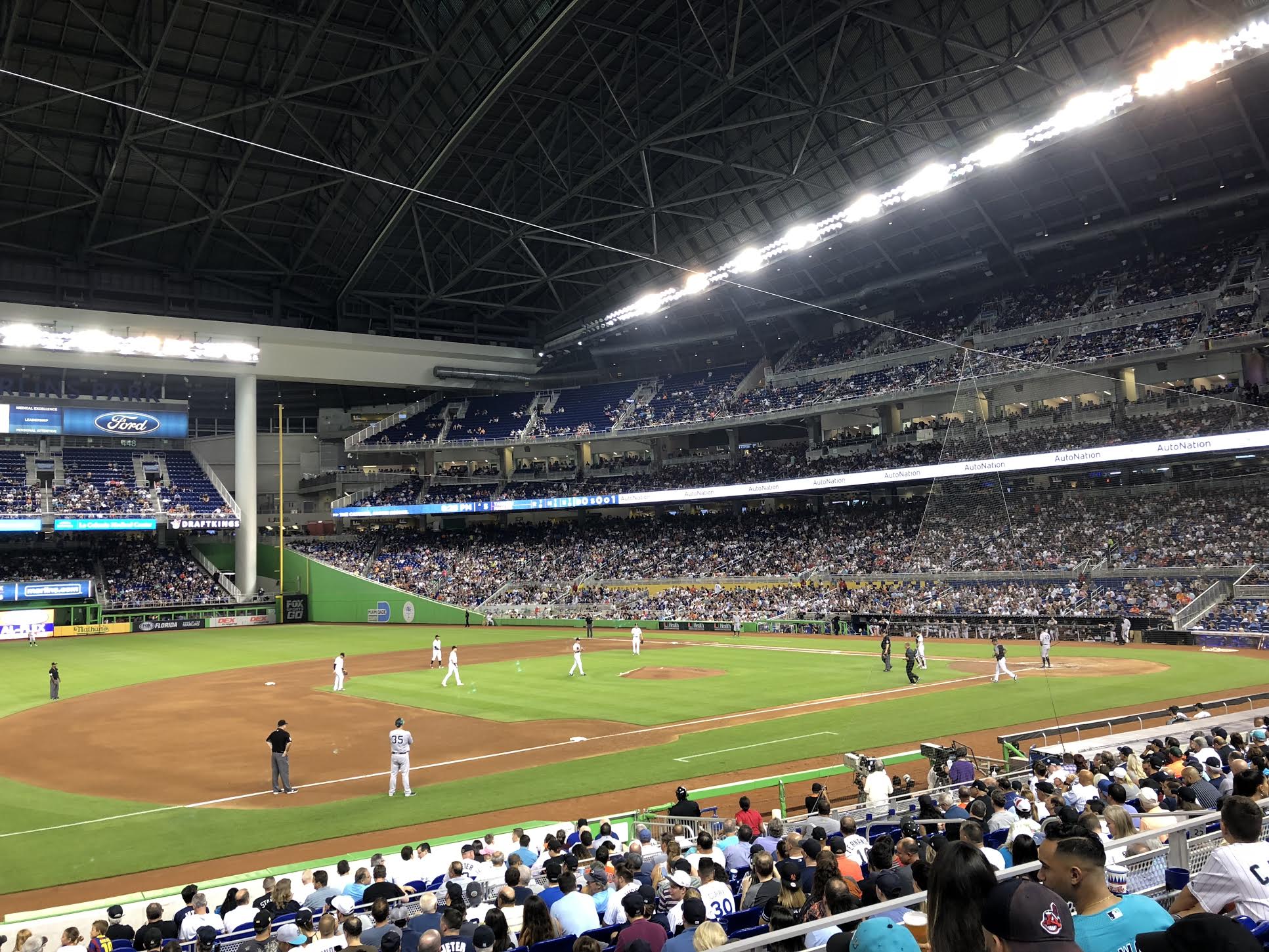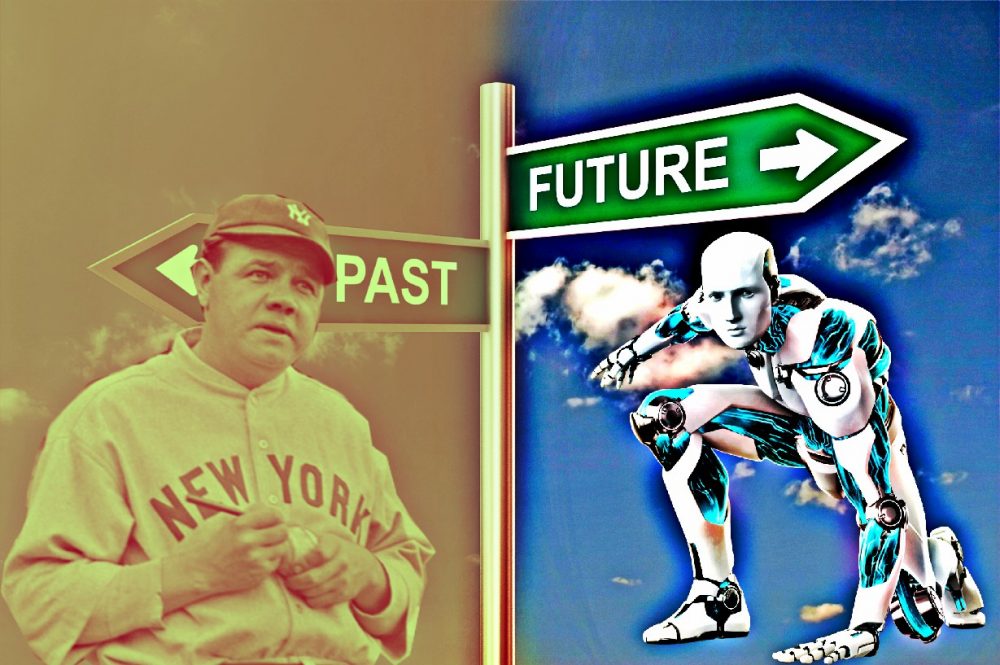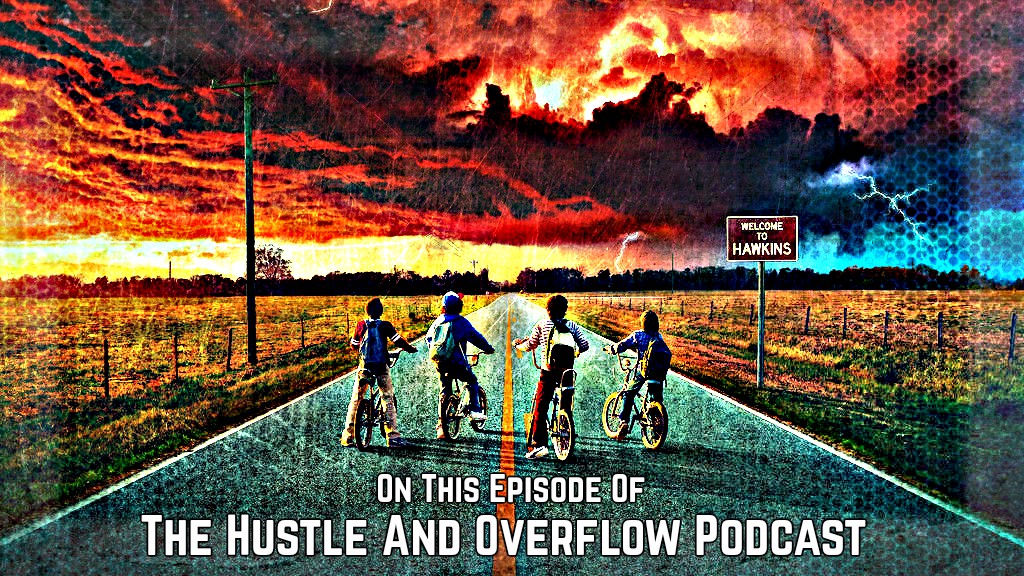
Image courtesy of Steve/Flickr.
Sports fans are bombarded with reasons to stay home and watch their teams on television instead of venturing to the stadium – the reasons vary from safety concerns to frustration with the manufactured nature of the jumbotron experiences.
Those reasons are valid but miss the essence of visiting a stadium: the shared camaraderie of diverse people coming together for a common cause.
My first experiences attending ballgames were formed in Shea Stadium’s upper deck. Shea’s upper deck jutted skyward, making it easier to distinguish logos of passing airplanes than watching Kevin McReynolds shag fly balls. I’ve been to Fenway Park and saw Orlando Cabrera hit a walk off homerun over the Green Monster. Oriole Park at Camden Yards is a breathtaking reflection of Baltimore’s industrial origins and Nationals Park is aesthetically underrated. I was in Sun Life Stadium’s right-field seats when Roy Halladay threw a perfect game. The spirit of each ballpark resides in small wonders – the smoke of Boog’s barbecue wafting in from right field in Baltimore, Boston fans bellowing Neil Diamond. These experiences are impossible to replicate except first hand. Hi-def television is amazing but the green of the grass and the crack of the bat are unmistakable, inimitable, and the opportunity to attend sporting events should be seized as often as possible.
On Friday, May 1, my buddy Rob and I seized the opportunity to watch the Marlins play the Phillies at Marlins Park. The Tuesday prior, I won tickets through The Ticket’s Zaslow and Joy Morning Show – they have a contest every Tuesday called “Tool of the Week.” The journey didn’t’ seem likely until 4:15 on that Friday. The Ticket was extremely accommodating – I wasn’t able to drive to Miami to get the tickets and the staff arranged to meet me at a bar on the way to the game. After getting the tickets, Rob and I made haste to Marlins Park, beginning a journey to a city and people I know astonishingly little about.
Tucked in Little Havana amongst modest houses and small apartment buildings, Marlins Park dominates the cityscape. The ballpark’s massive footprint explicitly contrasts the surrounding neighborhood. The ballyard is sterile and clean; the neighborhood hardscrabble and working class. Modern conveniences litter the stadium: bathrooms with massive amounts of urinals and stalls, a concourse from which you can view the game while standing in the concession line, kitschy novelties like the Bobblehead Museum are elements of Marlins Park possibly appearing in other new stadiums. The field of play, architecture, sights and sounds of the park are unique to Miami, however.
Outside the stadium, orange letters are embedded in the sidewalk as a tribute to the stadium formerly erected at this site, the Miami Orange Bowl. The bold color palette of reds, blues and yellows used inside the stadium reflect similar architectural elements and tropical nature of the city. Even the “M” in the Miami Marlins wordmark is a distinct font fans of Sonny Crockett may recognize. To an outsider like myself, Miami’s beauty is the boldness of the unique colors, architectural nuances and tropical flavor.
Inside the stadium behind home plate, Marlins Park has massive saltwater fish tanks embedded in the walls and occupied by more than a dozen varieties of tropical fish. The tanks are covered before and after games, but during games the tanks are visible to television audiences as they watch Marlins’ hurlers ply their trade. The bright neon green wall surrounds the field of play, ascending to irregular heights in the outfield. Left field’s wall is clear glass, allowing patrons of the Clevelander (more on this later) to view the game while dancing or swimming. Left-center is the home of Marlins Park’s “home run sculpture.” The sculpture dominates the landscape beyond the outfield wall, there is no other visual attractions near it so the eye is drawn to the pastel marlins and flamingoes. During a home run, the sculpture lights up, spews water, and spins the marlins. Readers of a certain age will remember the original Nintendo’s epilepsy warnings every time a Marlin hits a ball exiting the field of play in fair territory. Behind the sculpture is a retractable window. During day games this window provides views of downtown Miami’s skyline. The window opens during night games to preserve the same view for evening patrons.
The Clevelander nightclub exists as a separate entity within the ballpark blaring EDM with baseball as the background vista. Though the nightclub is new, the name isn’t. The Clevelander is a Miami institution. Located on South Beach’s Ocean Drive, the Clevelander is one of South Florida’s original art-deco resort hotels. The hotel added its famous pool in the 1950s; no coincidence its sister location at Marlins Park included the distinct lettering and pool as homage to the venerable hotel’s place in Miami’s history. The nightclub feature of Marlins Park makes it the only baseball stadium where fans can go to a game and never see a pitch if they’re so inclined.
These details are why baseball fans from traditional baseball markets like myself are inclined to sneer derisively at Marlins Park and their fans. The Marlins are 22 years into their existence and their fourth year as the Miami Marlins. Fans of traditional teams deride the Marlins fan base’s lack of commitment to their team along with the propensity of various owners of the Marlins to engage in fire sales. During the franchise’s tenure as the “Florida Marlins,” fans attended games at Sun Life Stadium to root for the out of town team. Once the Marlins moved to Marlins Park in Little Havana and became the Miami Marlins, this particular class of out-of-town fans were less likely to make the trip. Sun Life Stadium was easily accessible from Florida’s Turnpike whereas Marlins Park requires driving on I-95, making a harrowing merge onto the Dolphin Expressway only to exit quickly, and drive through Miami traffic to pay $10 to park in someone’s front yard or pay exorbitant fees to park in the garages furnished by the Marlins. The area’s working class aesthetic turns off the affluent white suburban crowd. The Marlins bet the city of Miami would embrace the team despite the disgusting nature of how taxpayers were stuck footing the bill for the stadium’s construction. To an outsider, the Marlins tenure in South Florida is secure but the team is baseball’s annoying, entitled classmate – despite the guy’s utter lack of effort and perpetual cry of victim, he’s continually praised while receiving the same grades as the people in class who work hard and play by the rules. Applying that narrative to Marlins’ fans lacks accuracy.
Yes, the Marlins engage in fire sales. Yes, if a player signs with the Marlins he shouldn’t expect to finish the contract with the Marlins. Yes, Marlins attendance is consistently depressing. Yes, two decades of ownership’s penny-pinching roster construction juxtaposed with record profits invites cynicism regarding this franchise’s most modest declarations. Because the Marlins organization is ripe for parody, fans of other teams erroneously classify Marlins’ fans as uncultured baseball rubes lacking the sophistication necessary to appreciate the finer nuances of America’s pastime. These opinions, derived from ignorance and the haughtiness all Red Sox fans are contractually obligated to flaunt, are entirely false.
The experience of attending ballgames robs fans like myself of preconceived ignorant opinions of other fan bases. Upon arrival at Marlins Park, Rob and I parked in a homeowner’s front yard. The man directed us to a parking space enthusiastically in Spanish. We strolled one block to the stadium, passing small apartment buildings where sliding glass doors were covered by bedsheets, another indication of Little Havana’s working class. Once inside the stadium, we devoured Cuban cuisine from the concession. Rob had a medianoche – the Cuban sandwich consisting of sliced ham and pork with pickles, swiss cheese and mustard on egg bread. I dined on lechón – shredded Cuban pork with mojo and diced onion on Cuban bread. We ordered off a menu flashing both English and Spanish, again the Spanish versions exuded more excitement.
We took our seats and immediately noticed the beauty of Miami’s sparse crowd. The diversity was unparalleled. African-American fans cheered the local nine while Latin fans from many countries exhorted their favorite players in various dialects of Spanish. Fans earnestly started the wave and were persistent – it took a half-inning for the stadium to catch on, but when the wave finally caught on it lasted an entire half inning. A fan sitting a few rows below us salsa danced between innings. The crowd was distinctly urban, working class folks. They weren’t hostile towards the visiting Phillies, instead truly believing in their Marlins. They cheered at times “sophisticated” baseball fans would deem appropriate. The vibe was fun, and positive. The fans were passionate. The most enjoyable part of attending the game was Marlins fans having a good time without the life and death stakes Red Sox fans attach to meaningless April tilts against the Twins.
A 72-inch high-def television with the MLB Extra Innings package can’t replicate the Marlins experience. My time in Miami was notable because I experienced the different culture of a city by way of their sporting experience. I’ve never been in a place where Spanish was spoken just as much as English, or a man’s front yard doubling as an impromptu parking garage. My stereotypical idea that Marlins Park’s atmosphere resided within the boundaries of contrived was proven incorrect – these fans created a party in the stands centering on the baseball game. It was fun being proven wrong and having my baseball fan haughtiness quotient diminished. Miami’s Marlins are a very interesting team and the fan experience, if a window onto the city of Miami, shows people who are a hard-working, fun group. The stadium may have been built through duplicitous means, and its imposition in a residential neighborhood guarantees a level of economic hardship for residents, but fans of the Marlins attending Marlins Park provided a fantastic atmosphere for baseball. Experiencing a Marlins’ telecast while ensconced on my couch prohibits access to such subtle, wonderful trivialities like seeing the Orange Bowl letters, the sculpture, fish tanks and the Clevelander. It also would fail to capture how loud a half-full stadium can get on a walk-off double.
Go see a game. The subtle beauty of stadia and fan experience is still worth the price of admission. I should know – next week I’m visiting Marlins Park twice!















